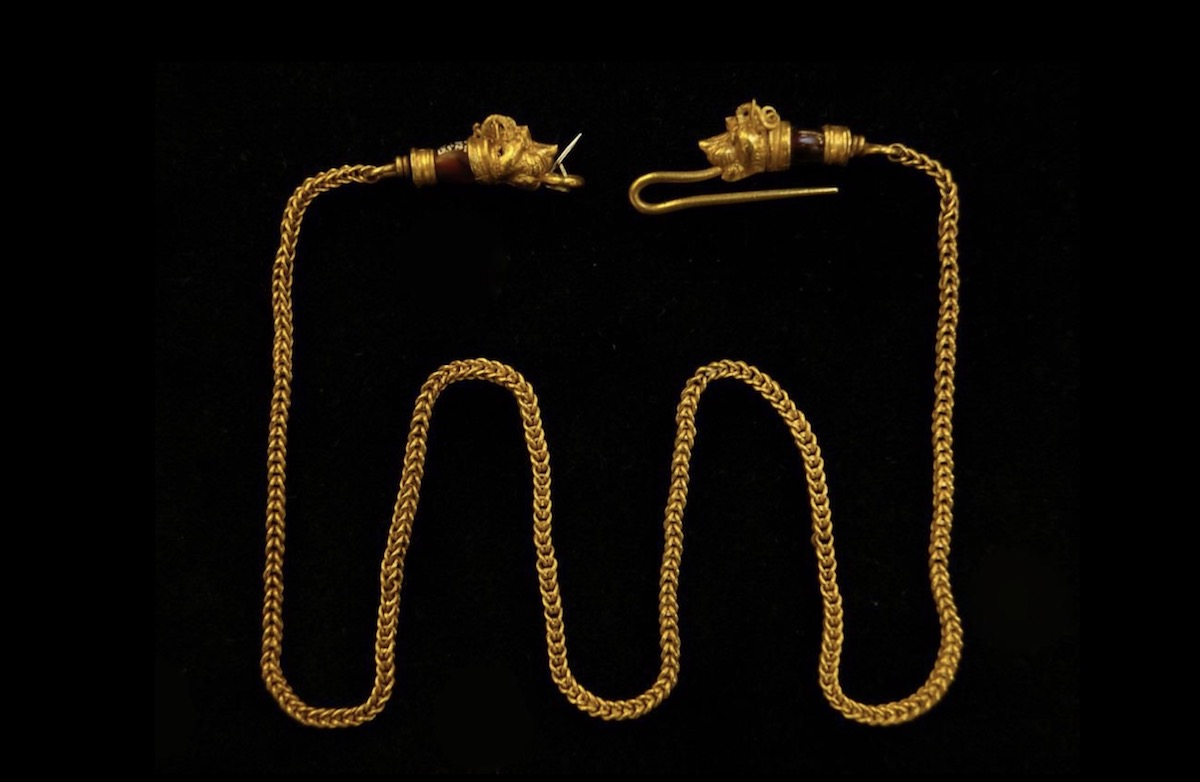Last August, 1,200 to 2,000 valuable objects were reported “missing, stolen or damaged” by officials at the British Museum. A senior Curator, Peter John Higgs, 56, was dismissed, pending a police investigation, after several items were traced to the online bidding platform eBay.
British Museum’s newly launched website
Recovering stolen artefacts from a high-profile institution like The British Museum is a complex and often lengthy process involving legal, investigative, and diplomatic efforts. As many of the pieces were sold on eBay’s international trading website, there should be a paper trail; however, this will involve cooperation by an American company that isn’t particularly transparent or helpful in these matters.
Major museums, law enforcement agencies, international organisations, and art recovery specialists work together to track down and repatriate stolen artworks. Here is a general process that a significant museum might follow when attempting to recover stolen antiquities:

The British Museum has asked the public to help identify and recover objects that have gone missing from its collection. The museum has now revealed that most are Greek and Roman gems and jewellery. The Museum has also shared pictures of similar items to the sixty objects that have been returned to the collection. An independent review of the museum’s security has been launched, and will also oversee the attempts to recover the items.
Report the Theft:
The first step is to report the theft to the relevant law enforcement agency, such as the Met, Interpol, or the FBI (in the United States). The museum must provide detailed information about the stolen artwork, including descriptions, photographs, and provenance records. In the case of the British Museum, it is difficult to speculate how well the works stolen were documented.
Internal Investigation:
The museum is already conducting an internal investigation to gather as much information as possible about the theft. This may involve reviewing security footage, interviewing staff, and assessing the security protocols during the theft.
Collaboration with Law Enforcement:
Museums often work closely with law enforcement agencies specialising in art theft, such as Interpol’s Works of Art Unit. These agencies have expertise in tracking and recovering stolen art internationally. Let’s face it: the Met is currently a mess and crime-solving theft stands at 3%.
Database Searches:
Museums and law enforcement agencies search international stolen art databases, such as INTERPOL’s Stolen Works of Art database and the Art Loss Register, to see if the stolen artwork has been reported elsewhere.
Legal Action:
If the stolen artwork is identified or located, legal action may be necessary to recover it. This may involve filing a lawsuit or working through extradition processes, especially if the artwork has crossed international borders.
Negotiations:
In some cases, negotiations with the individuals or entities possessing the stolen artwork may be necessary. These negotiations can be delicate and may involve offering rewards or compensation for the return of the artwork.
Diplomatic Channels:
If the stolen artwork is located in another country, diplomatic efforts may be required to facilitate its return. Museums and governments may work together through diplomatic channels to resolve the matter.
Public Awareness and Outreach:
Museums often use their networks and public outreach to raise awareness about stolen artwork. They may employ social media, press releases, and collaborations with organisations like the International Council of Museums (ICOM) to seek assistance from the public and the art community.
Provenance Research:
Museums conduct rigorous provenance research to establish the rightful ownership of the artwork. This research may involve tracing the artwork’s history, ownership records, and any claims of restitution or repatriation.
Recovery and Restoration:
Once the stolen artwork is successfully recovered, it undergoes a process of restoration and authentication to ensure its condition and authenticity. This often involves conservation experts and art historians.
Return to Display:
Once the stolen artwork has been restored and authenticated, it can be returned to public display in the museum or, if appropriate, returned to its rightful owners or descendants.
It’s important to note that the recovery process can vary greatly depending on the specific circumstances of the theft and the location of the stolen artwork. Cooperation between museums, law enforcement agencies, governments, and international organisations is crucial in successfully recovering stolen art and returning it to its rightful owners or institutions.
Sounds to me that the BM is ‘shutting the stable door after the horse has bolted.’

